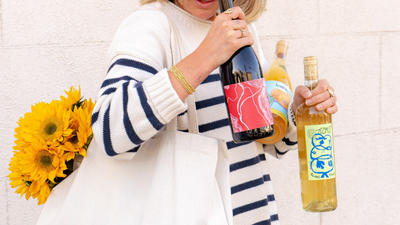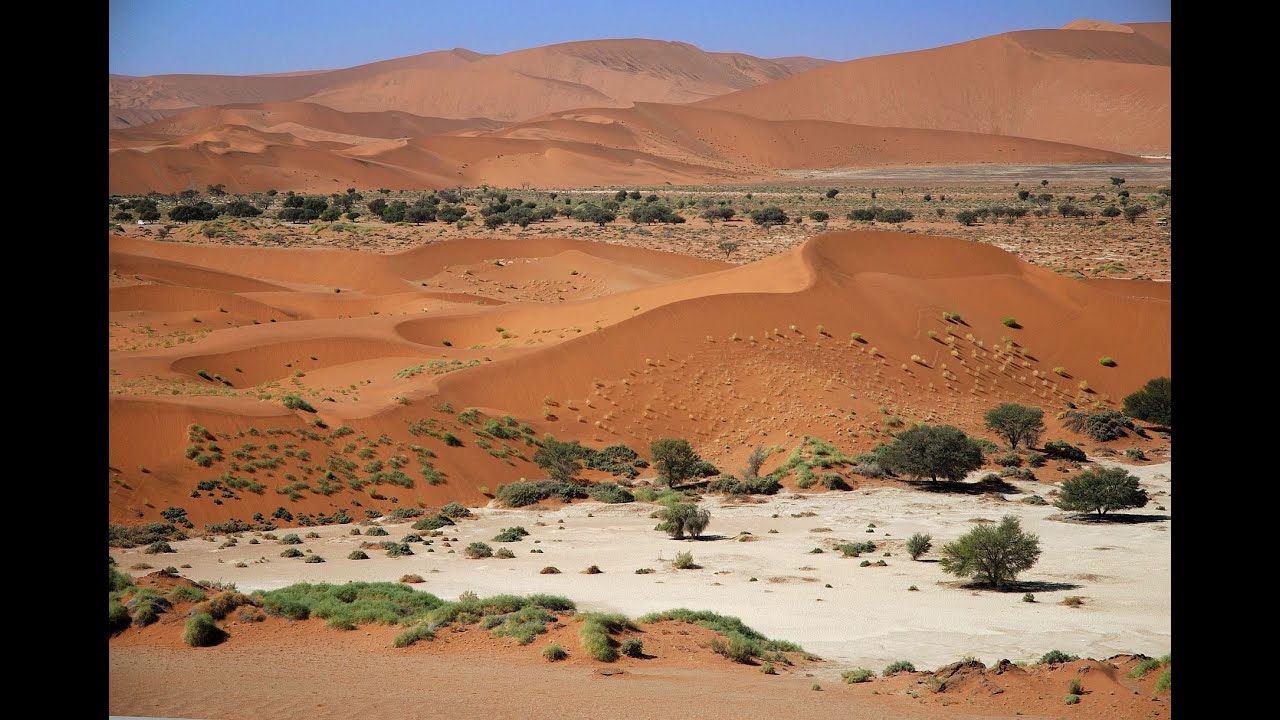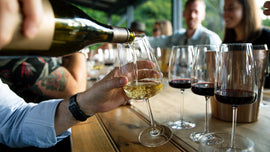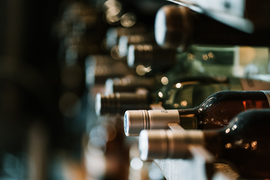Namibia has been called the Land God Made in Anger. It’s a landscape composed of dried-out riverbeds left thirsting for water; rolling savannas devoid of vegetation; towering mounds of sandy dunes shifting aimlessly for millenniums, waiting to be sculpted into something permanent. There’s plenty of space, but few humans to fill it. Namibia is more than twice the size of Germany, but with just over two million people, it’s one of the least densely populated countries on the planet. It’s austere, charred, forsaken — and that ferocious sun certainly doesn’t help its case. God blessed Namibia with plenty of light but didn’t bother bestowing many places to find respite from it.
Few countries in Africa can match Namibia's sheer natural beauty. The country's name derives from its (and the world's) oldest desert, the Namib, and there are few more stirring desert realms on the planet, from the sand sea and perfect dead-tree valleys at Sossusvlei to the otherworldliness of sand dunes plunging down to the sea at Sandwich Harbour and the Skeleton Coast. Inland, running through the heart of the country, a spine of mountains creates glorious scenery – the Naukluft Mountains, the Brandberg, Spitzkoppe, Damaraland, and the jaw-dropping Fish River Canyon. With rivers and wetlands in the Caprivi Strip and the endless gold-grass plains of the Kalahari, it's difficult to think of an iconic African landscape that Namibia doesn't possess.
Approximately 500km south of Namibia’s capital Windhoek, close to the town of Keetmanshoop, is the Naute Dam. The dam's source is the Löwen River, a tributary of the Fish River. The Dam was built in 1973, and the government-funded project, called “Naute”, was supposed to support Namibian farmers by showing how to plant different kinds of fruit. The Dam is primarily used for the supply of water to Keetmanshoop and neighboring towns and for the irrigation of the fruit plantations. What was previously barren, unfertile land has become 800 hectares of varied crops. The plantations of Naute produce dates (all palm trees are date palms), prickly pears, table grapes (not for winemaking), some wine grapes, pomegranates and pecan nuts. Naute Kristall Distillery was set up by Michael Weder to create a range of fine spirits from the fruit varieties cultivated near the dam and in other parts of the country.
In 2007, when the oldest wine farm in Namibia, the KRISTALL KELLEREI near Omaruru in the heart of the Erongo Mountains, was up for sale, Michael Weder and his wife decided to take up the challenge to cultivate white and red wine vines under the special conditions of the desert climate with 330 days of sunshine and sandy soils. Michael’s background was in labor law, but he and his wife decided to own a business where they could work together. However, Michael’s true passion was to create fine spirits from the fruit varieties cultivated in Namibia, like the date, pomegranate, prickly-pear and the endemic Kavango Orange. When he purchased Kristall Kellerei, distillation was already part of the set-up. They decided to continue for the challenge and the fun it represented.
Namgin is this distillery’s answer to the gin craze. All production steps are done by hand. The base alcohol for the Namgin is made from ripe dates. In the first step, dates are dehydrated and fermented. The resulting mash is then distilled. After six distillations, the alcohol obtained is finally filtered. Three different macerates are then prepared in the base alcohol. First, a juniper brandy with juniper, Java pepper, and cardamom. Second, the spice brandy with cinnamon, ginger, lavender, rosemary, peppermint, and Devil’s Claw (Harpagophytum procumbens,) which originates from the Kalahari and Savannah desert regions of Southern Africa and is considered a potent anti-inflammatory. Finally, the citrus brandy follows with oranges, lemons and limes. The three macerates are individually distilled using the modern copper still built by Arnold Holstein from Markdorf on Lake Constance. After several weeks of rest, the individual brandies are blended. Finally, the gin is mixed with fine spring water to a drinking strength of 45% Alcohol.
Crisp, elegant juniper notes and the spicy, explosive citrus aromas give Namgin its unique character. The bouquet is complex, but the fruity base alcohol from the dates is clearly in the foreground. Juniper and citrus nuances combine with floral notes from the lavender. The combination of cinnamon, ginger, and rosemary also gives the Namgin a pleasantly spicy touch.
Cocktails
Served perfectly:
Slightly chilled, the Nam Gin can be enjoyed pure. The distiller Michael Weders recommends a cup of espresso and a piece of dark chocolate.
The Monkey Gland Gin Cocktail:
This bright and tart orange and pomegranate gin cocktail is from the Prohibition Era.
Ingredients:
2oz. Namgin Gin
1oz. Orange juice (Squeeze your own for bonus flavor)
.5oz. Grenadine
1 Dash Absinthe
Instructions:
Chill your glass! (This is always a good idea.)
Add your absinthe in one of two ways. You can add absinthe to your martini glass, swirl it around, and then pour it out. You could also add your absinthe to a shaker filled with glass, then strain it out. Use the absinthe rinsed shaker to mix the rest.
Mix up ice, your gin of choice, your grenadine in the shaker.
Strain into your Martini glass.
Garnish with orange. A slice or rind.
The Rosemary Orange Gin Cocktail:
Ingredients:
2 oz. Namgin Gin
3-4 Slices Fresh orange (Save a slice for the garnish)
2 Sprigs Rosemary (Put some aside as a garnish)
1 oz. Simple syrup
Top it off with Seltzer for the bubbles
Instructions:
Chill your glass
In a mixer, add some chopped up orange slices and one sprig of rosemary and smash it up.
Add your gin and simple syrup to the muddled mess of oranges and rosemary, give a quick shake.
Strain into your Collins glass, already filled with ice.
Top with seltzer and garnish.





